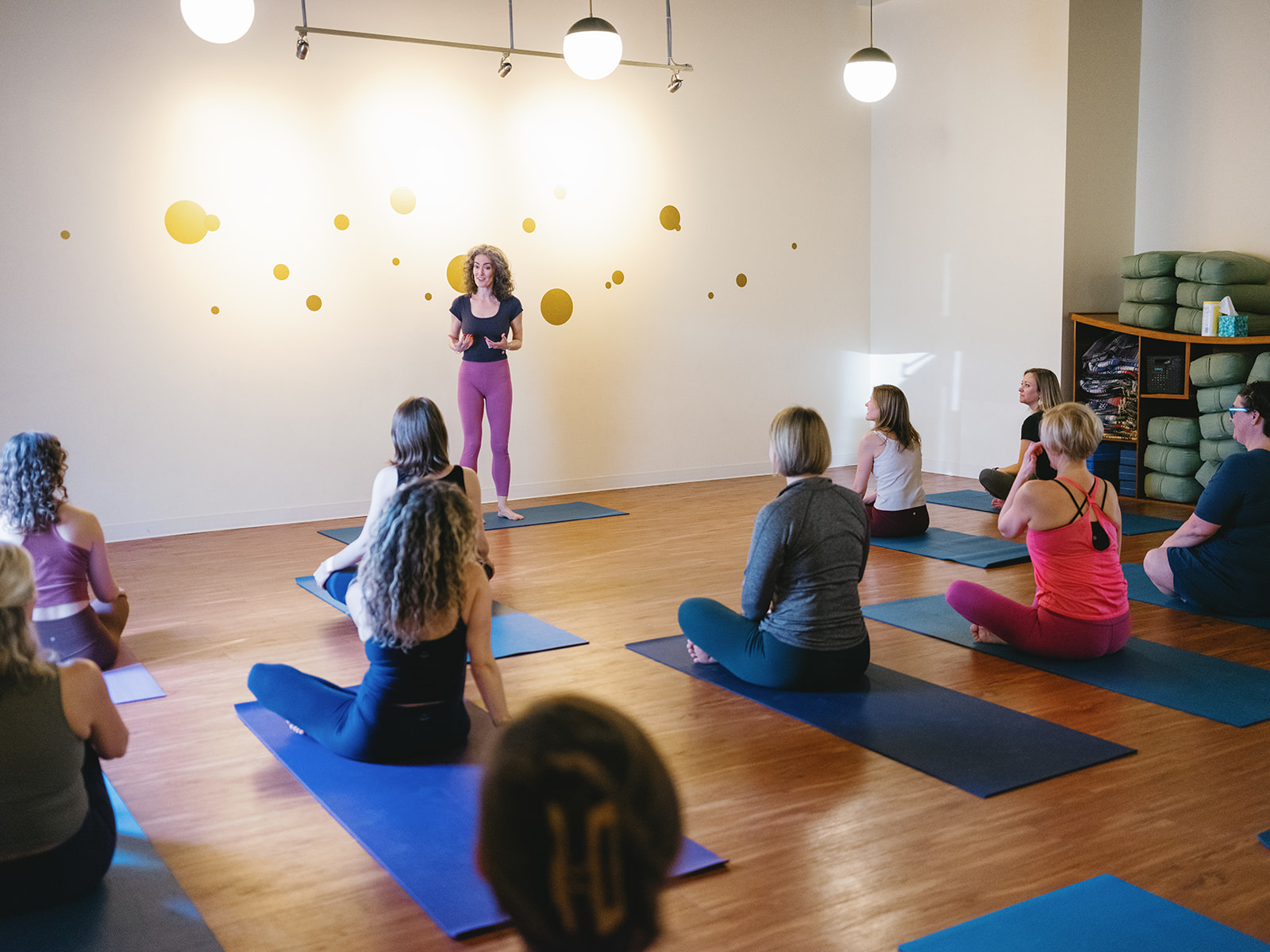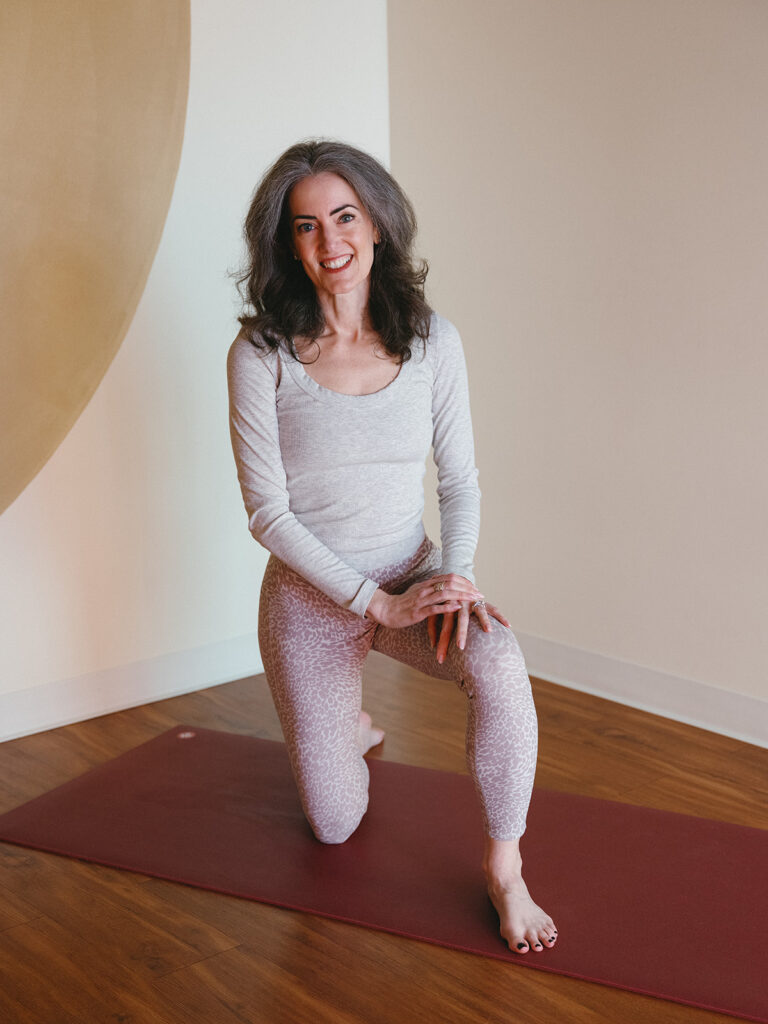Do you know that knot in your stomach before planning a yoga class? The one that appears when you stare at a blank page, wondering what sequence to create? You’re not alone. Whether you spend hours overthinking the “perfect” sequence, fall back on the same reliable flow, or just wing it—you’re caught in what I call the Planning Confidence Cycle.
This cycle is stealing your time, creativity, and enjoyment of teaching. But there’s a better way.
What is the Planning-Confidence Cycle?
You doubt your ability to plan an effective class, so you either:
- Overcompensate by spending hours researching and planning
- Avoid planning altogether
Either way, this affects how confidently you teach:
- When you overplan, you’re too in your head during class
- When you underplan, you’re uncertain if what you’re offering is balanced
This lack of confidence then feeds back into planning anxiety for your next class—and the cycle continues.
Most yoga teachers bounce between these extremes. Some weeks you plan meticulously; other weeks you wing it entirely. Neither approach gives you what you want: confident teaching that serves your students while preserving your energy.
Introducing the S.E.R.V.E. Method
What if there were a middle path between rigid sequences and complete improvisation? A framework that gives you both structure AND freedom while cutting your planning time in half?
The S.E.R.V.E. Method is a practical approach to help you break free from planning anxiety and teach with genuine confidence. No more Sunday nights stressing over sequences. No more second-guessing yourself right before class.
Check out this video where I break down the entire method:
The Five Components of the S.E.R.V.E. Method
The S.E.R.V.E. Method stands for:
S: Structure Your Foundation
Every effective yoga class needs a physiologically sound foundation. This is where my 6-4-2 framework from The Art of Yoga Sequencing comes in:
- Six movements of the spine (forward bends, backbends, side bends, twists)
- Four lines of the legs (front, back, inner, outer)
- Two core actions (stabilization and articulation)
When you start with this structure, you’re like a chef with the perfect pantry. The recipe calls for “1 cup flour,” but YOU decide which type: all-purpose, whole wheat, gluten-free? The structure ensures a balanced class while giving you creative choice.
E: Experience Before Teaching
If you haven’t felt a sequence in your own body, you’ll struggle to guide it confidently. You’ve got to embody it before you can teach it well.
Before teaching any sequence—even one you’ve created—practice it. Notice where:
- Transitions feel clunky
- Intensity builds too quickly
- You need more preparation or recovery
Just like a chef tastes the dish before serving it, you need to experience your sequence before teaching it.
R: Repeat with Purpose
Here’s a radical idea: you don’t need a brand new sequence for every class.
Thoughtful repetition benefits both you and your students:
- For you: reduces planning time and allows refinement of your teaching
- For your students: creates familiarity that helps them go deeper
Think of it like serving a signature dish with seasonal variations. The core remains recognizable while small changes keep it interesting.
V: Vary with Intention
While repetition creates a foundation, thoughtful variation keeps your teaching vibrant. The crucial distinction is varying with clear intention rather than changing things randomly in pursuit of “creativity.”
Effective variations respond to:
- Your students’ actual needs and abilities
- Energy levels and time of day
- Seasonal considerations
- Specific focal points
Like a chef adjusts spices based on available ingredients or customer preferences, you make purposeful adaptations that serve real needs.
E: Evolve Your Voice
Your teaching voice is uniquely yours. It naturally develops as you gain experience and confidence.
This is the journey from cook to chef—from following recipes exactly to creating your own signature dishes. With solid fundamentals, your unique perspective naturally infuses your teaching.
Breaking the Cycle
What makes the S.E.R.V.E. Method powerful is how it addresses the root cause of planning anxiety: the false belief that you must choose between structure and creativity, between consistency and variety.
These aren’t opposing forces—they’re complementary elements:
- Structure enables creativity by giving you a foundation
- Consistency creates space for meaningful variation
- Experience builds confidence that leads to authentic expression
Getting Started Today
If the Planning-Confidence Cycle sounds all too familiar, try just one component of the S.E.R.V.E. Method this week:
- Start with Structure—make sure your next class includes all six movements of the spine, all four lines of the legs, and both core actions.
- Try Experience—practice your planned sequence before teaching it, noticing where it could be refined.
Ready to Learn to S.E.R.V.E.?
Join my free workshop on “Teaching Multi-Level Classes with the SERVE Method,” where I’ll show you how to apply this framework to one of teaching’s biggest challenges—classes with mixed experience levels. It’s coming up in June at Comfort Zone Yoga, my virtual studio focused on teacher development. Join for free below, then RSVP for the free workshop!
Because here’s what I know after over twenty years of teaching: when you free yourself from planning anxiety, you create space for the real magic of yoga teaching to emerge. Your classes become more effective. Your students feel more supported. And you rediscover the joy that brought you to teaching in the first place.


